My online research for things to do in Pierre, SD included the information that the name of the city is pronounced “Peer.” When we stopped for gas in “Peer,” I asked the station owner, a native of Pierre, if this is true. He told me the first time he ever heard the city called “Pee-air” was on an episode of Cheers and “that just sounded weird!”
State Capitol. The big attraction in Pierre is, of course, the State Capitol, so that’s where we headed.

It looks similar (domed) to 46 other State Capitol buildings. Do you know where the four undomed State Capitols are?
We were surprised to find no security for entering the building. Zilch! We just walked in and walked around to our hearts’ content. Like all State Capitols, it’s a beautiful building.
Legislators have it pretty good in South Dakota. They convene each year on the second Tuesday of January and meet for 35 working days in even-numbered years and for 40 working days in odd-numbered years. In recent years, they have completed their work in 38 days each year.
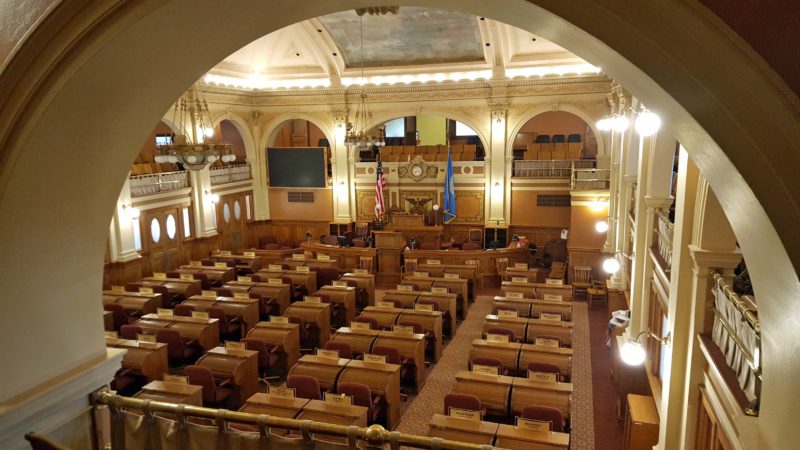
The 38 working days for this year are over, so the houses are empty until next January.
Soldiers’ memorial. On the Pierre State Capitol grounds, there is a memorial to fallen soldiers of all six branches of service (Army, Navy, Air Force, Marines, Coast Guard, and Merchant Marine). The fountain in the memorial is fed by the natural artesian lake behind it. The water is 92 degrees, so it never freezes in the lake or in the fountain. The warm water is also used to heat the Capitol. The water in the fountain used to bring natural gas to the surface, causing the water to burn constantly and making this a “flaming fountain,” but now it’s just water, no fire. (There are old videos of the flaming fountain on YouTube.)
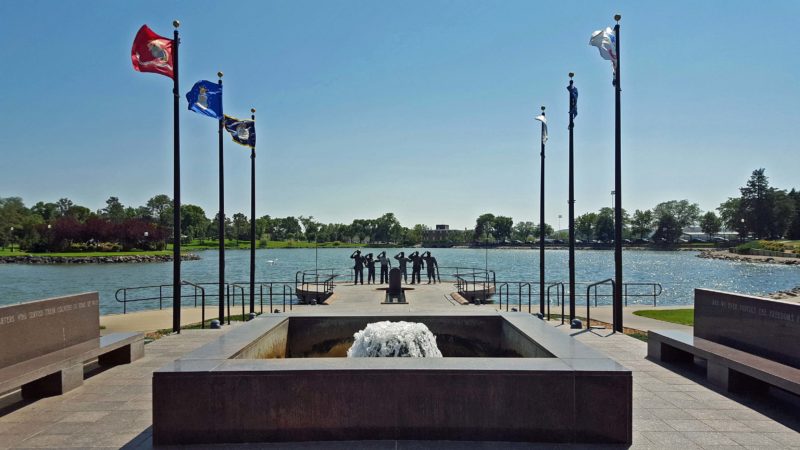
That’s the artesian lake in the picture. The soldiers are life-sized and, from a distance, we thought they were live people until we noticed they never moved. The former flaming fountain is in the foreground.

From the lake end of the memorial, you can see the cascading water flowing from the fountain toward the lake.
Before leaving the city, we went to LaFlamboise Island for a pretty view of Pierre. The island is in the Missouri River and includes a park and a boat launch. Lewis and Clark were here.

Here’s Ted, admiring Pierre.
Oahe Dam. When Oahe (oh-ah’-hee) Dam was built on the Missouri River just north of Pierre in 1948, it was the largest rolled-earth dam in the world. The reservoir behind the dam–Lake Oahe–is one of the longest man-made lakes in the world. It’s 231 miles long and goes from one state capital to another: from Pierre, SD to Bismarck, ND.
Oahe is a either a Nakota or a Dakota (no one knows for sure) word meaning “a firm place to stand.” A good, solid name for a dam.
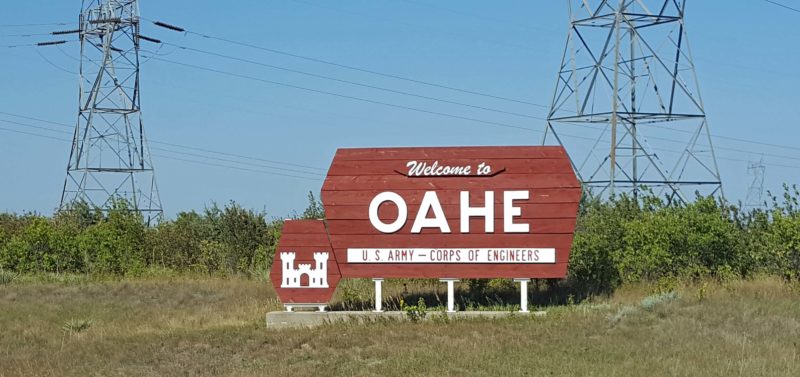
The sign affirms we were in the right place to see the dam.
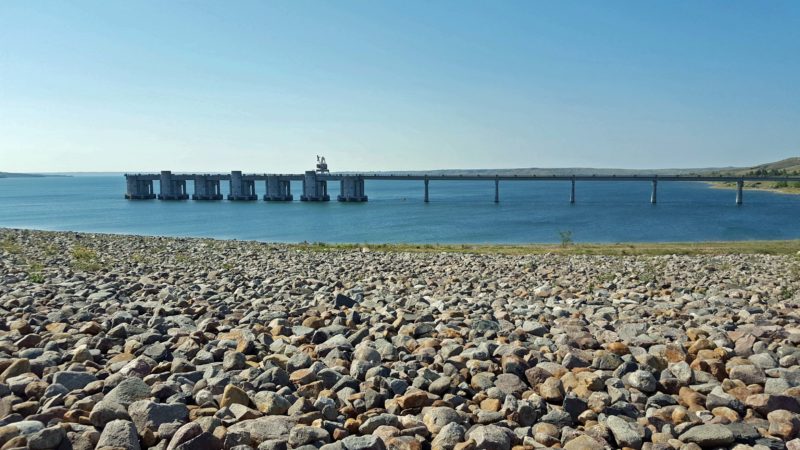
Seven intake ducts in Lake Oahe direct water under the earthen dam.
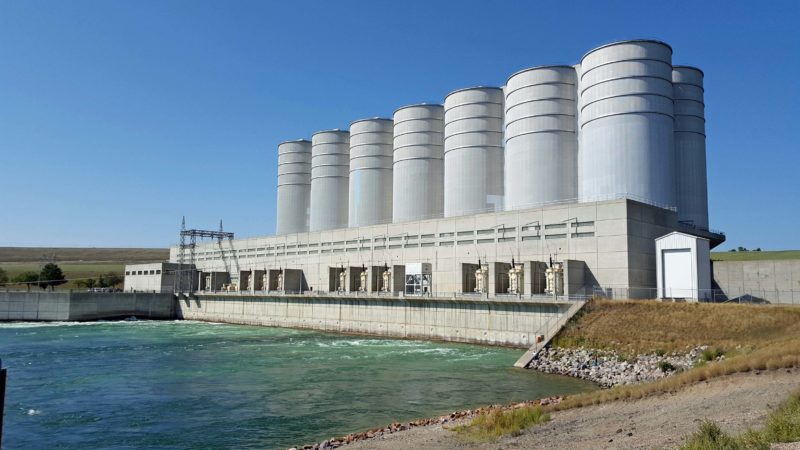
Seven tailraces release the water from the intake ducts downstream into the river. The tailraces are less visible than at some other dams because the water reaches them by passing under the earthen dam.
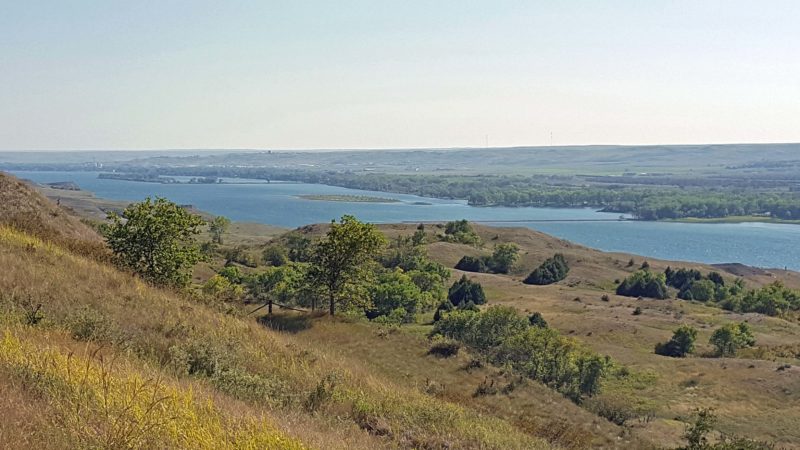
A portion of Lake Oahe.

This mission building was a church and a school. It would have been flooded by Lake Oahe, but money was raised to move it and save it for its historical value.
Pierre was fun to visit. Now we have to remember to always pronounce it “Peer.”